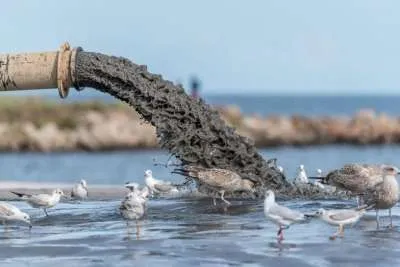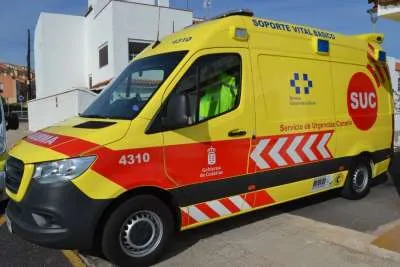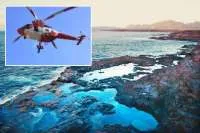The ‘Perfect Photo’ tourism threatens hidden gems of the Canary Islands
- 07-10-2024
- Travel
- Canarian Weekly
- Photo Credit: Turismo de Canarias
Social media has rapidly transformed the Canary Islands, turning once-hidden gems into popular tourist destinations. This phenomenon is causing increasing concerns about the environmental and social impacts of mass tourism, especially in fragile and lesser-known areas.
One notable example is Bocacangrejo, a small fishing village in Tenerife with a population of just 380 residents. Overnight, its peace was shattered when Instagram posts featuring the colourful hearts painted by a local resident, Rafa, drew crowds of tourists eager for the perfect photo.
What was once a quiet enclave became overwhelmed with visitors, forcing Rafa to cover his artwork with grey paint to deter the influx. Similar situations have arisen at other scenic spots in the Canary Islands, such as "Popcorn Beach" in Fuerteventura and the Barranco de las Vacas in Gran Canaria, where tourism driven by social media threatens the conservation of these natural spaces.
Social Media’s Role in Changing Tourism
The rise of social media platforms like Instagram and TikTok has completely altered the dynamics of tourism. According to Sara Sánchez-Romo, Director of Digital and Social Media for the Tourism Board in the Canary Islands, "People no longer want to feel like just another tourist. They want to be explorers, discovering places off the beaten path."
However, this sudden surge in popularity can catch local governments off guard, with inadequate infrastructure to manage the influx of visitors or to protect these sites.
This issue was highlighted in a study by Yana Wengel, "The TikTok Effect on Destination Development: Famous Overnight, Now What?" It highlights how certain destinations gain rapid online fame, often without sufficient oversight to protect them from mass tourism.

Environmental Concerns in Protected Areas
Adrián Flores, an environmental specialist in biodiversity and conservation, notes that the problem is systemic, citing the lack of vigilance at Teide National Park, one of the world’s most visited parks. "There’s been more than enough time to address these issues, yet supervision remains virtually non-existent," he says.
Flores also points to the degradation of the Maspalomas Dunes Nature Reserve in Gran Canaria. Despite clear signage and marked trails, over 300 fines were issued in 2023 to tourists who violated the protected area's rules. One extreme case occurred in February when a YouTuber-organised event drew dozens of people digging for hidden money in the dunes, causing significant damage to the ecosystem.
A Dilemma of Growth and Sustainability
The surge in tourism following the pandemic was largely driven by digital content promoting the islands as travel destinations. Álvaro Jiménez, a content creator and tourism graduate from the University of Las Palmas de Gran Canaria, reflects, "We came from a period of great uncertainty, so we thought all promotion was good. But no one anticipated the demand would grow so quickly, and now we’re struggling to cope." Jiménez adds that the consequences have been particularly negative for protected areas.
Sánchez-Romo stresses the importance of addressing younger travellers, who now plan trips based on what they see on social media rather than through official tourism channels. "That’s why we collaborate with influencers and voices aligned with the values we want to promote, trying to redirect tourism flows and avoid overcrowding," she explains.

Ethical Responsibility and Local Impact
Jiménez also emphasises the role of local content creators in promoting responsible tourism. "Not everything is worth it for a few likes or a viral video. It’s an easy way to reach a large audience, but ethically, it’s a very questionable practice."
Sánchez-Romo echoes this sentiment, stressing that "we must respect local communities." The impact of mass tourism has sparked a growing movement in the Canary Islands to protect the region from what many are calling a "predatory" tourism model. A large demonstration is scheduled across all islands on October 20th under the slogan "The Canary Islands have a limit."
Locals are already feeling the pressure, as one resident of Santa Cruz de Tenerife shared: "You find tourists even in the most remote little coves, and at the local restaurants we've always loved. The result is rising prices."
This growing awareness among residents and environmentalists reflects a call to find a balance between promoting the islands’ beauty and preserving their fragile ecosystems and communities.



























































